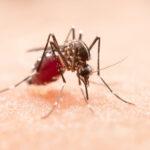What Are Whiteheads?
Whiteheads are a type of acne caused by pores clogged with excess dead skin cells, oil, or bacteria. When these pores close up, small white or flesh-colored bumps form on the skin. These bumps, known as whiteheads, are also called closed comedones or pimples.
Unlike other acne types, such as papules (raised red bumps) or pustules (pus-filled lesions), whiteheads typically lack clinical signs of inflammation like redness or swelling. As a milder form of acne, whiteheads are usually easier to treat and manage than inflammatory acne.
While whiteheads may be unsightly, skincare treatments and lifestyle changes can help treat and prevent them.
What Do Whiteheads Look Like?
Whiteheads appear as tiny, raised, white or flesh-colored bumps. They are dome-shaped and lack a visible central pore. Whiteheads can burst or the pores can open, resulting in blackheads, another type of acne characterized by tiny black spots on the skin.
Whiteheads commonly develop in areas with large sebaceous (oil) glands, such as the face, chest, and back, but they may also appear on the neck or other parts of the body with abundant sebaceous glands. A dermatologist or healthcare provider can usually diagnose whiteheads based on appearance alone.
What Causes Whiteheads?
Whiteheads form when excess bacteria, oil, and dead skin cells build up and clog a pore. Factors like stress, lack of sleep, hormones, and certain foods can aggravate whiteheads and other acne types. Skincare, hair care, or makeup products containing oil can also trigger whiteheads.
Acne can affect individuals of any age. While most common among teenagers, it can also affect babies and adults. Acne tends to run in families, so if your parents had whiteheads, you might be more prone to them as well. Research has also linked smoking with a higher likelihood of developing acne.
How to Get Rid of Whiteheads
To eliminate whiteheads and unclog pores, consider using a benzoyl peroxide wash and a retinoid (a vitamin A derivative). Benzoyl peroxide washes, available from brands like Clearasil and Neutrogena, help eliminate acne-causing bacteria. Retinoids help unclog pores, speed up skin cell turnover, and reduce oiliness.
Some retinoids, such as adapalene (Differin), are available without a prescription, while others, like tretinoin (Retin-A), require a prescription. Adapalene is usually the least irritating retinoid. Non-prescription treatments should be given four to six weeks to work. If ineffective, consider adding a second treatment, like using benzoyl peroxide in the morning and a retinoid at night. Avoid using more than two acne-fighting products daily, as this can irritate the skin.
If whiteheads persist or worsen after a month of treatment, or if acne affects your well-being, consult a healthcare provider for further treatment options. These may include extractions by a dermatologist or prescription-based treatments. Oral antibiotics are typically reserved for moderate-to-severe inflammatory acne and are not recommended for non-inflammatory acne like whiteheads.
Always follow your provider’s instructions and recommended products for safe and effective treatment.
What Not to Do
Avoid popping, scratching, squeezing, picking, or rubbing whiteheads to prevent skin infections and scarring. Avoid touching the affected area with your hands or fingers to prevent spreading acne-causing bacteria.
Refrain from wearing tight hats or headbands, using greasy or oily cosmetics or skincare products, and ensure you wash off makeup before bed. Avoid tanning beds and protect your skin from the sun, as tanning can worsen acne and some treatments increase sensitivity to UV rays. Use a broad-spectrum, water-resistant, non-comedogenic sunscreen with SPF 30 or higher, stay in the shade, or wear sun-protective clothing.
How to Prevent Whiteheads
Prevent whiteheads by clearing your skin of excess dead skin cells, oil, or bacteria. Use a gentle, mild cleanser and avoid excessive scrubbing. Wash your face and body after exercising to remove sweat and dirt.
Use water-based or non-comedogenic skincare products and cosmetics, and remove makeup at the end of the day. If you have oily hair, shampoo daily and keep hair away from your face.
Avoid potential whitehead triggers such as excessive touching or rubbing of your skin, oily cosmetic and hair products, certain drugs (like steroids and estrogen), humidity, heavy sweating, stress, and lack of sleep.
Some research suggests a link between high-glycemic diets (foods that raise blood sugar quickly, like white bread, processed cereals, and white rice) and increased milk consumption with adolescent acne. Consult your healthcare provider about whether dietary changes could help manage your acne.












